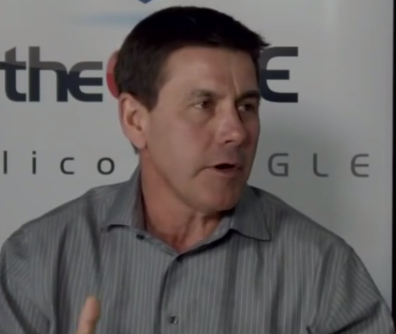 BIG DATA
BIG DATA
 BIG DATA
BIG DATA
 BIG DATA
BIG DATA
MapR Technologies Inc. was one of the three high-profile startups — along with Cloudera Inc. and Hortonworks Inc. — to burst upon the scene during the feeding frenzy a few years ago around Hadoop, the open-source big-data software framework. Like its counterparts, the company originally focused on integrating and extending components in the Hadoop ecosystem. As the big-data market evolved, it has become a multifaceted analytics and application development tools provider based on a master integration layer it calls the “converged data platform.”
Unlike its peers, the nine-year-old company has remained privately held. Chief Executive John Schroeder (pictured) has made no secret of the company’s interest in rewarding investors for the $280 million they’ve poured into the company, but given the tepid performance of its competitors’ stock prices so far, he’s not in a hurry. Schroeder stepped back from an operational role in 2016, but returned two months ago, citing a need to double down on the product. He spoke to SiliconANGLE about the future of the company and big data at large.
Four years ago, MapR described itself as “delivering on the promise of Hadoop.” Today you don’t even mention Hadoop in your profile. What changed?
Our first product included the entire Hadoop stack. That gave us easy access to large customers, since most were doing pilots with Hadoop. Technology expanded, so we added [Apache] Spark, SQL access, message streaming, analytics and exciting areas like machine learning with TensorFlow. They don’t require Hadoop. They’re also focused on a narrower range of use cases. Hadoop is still alive and well, but it’s not the next big thing like it used to be in 2009.
How has the nature of initial customer interactions changed over that time?
The market is maturing, but the noise is loud, and the signal-to-noise ratio is of low quality. Customers have a lot of trouble digging through the claims. While they’re more educated than they were six or seven years ago, they still need to evaluate and validate a lot of claims.
Is it any easier to get in the door these days?
It’s getting easier. Even though it’s a noisy market, big data still a must-have initiative. We’ve also expanded our scope. We started out doing things like recommendation engines, risk analysis and fraud detection, but now we’ve won connected car deals, we’ve got a medical device company using us for analytics on MRI machines and the public and hybrid cloud environments have introduced containerization and orchestration. Customers have had to evolve into a cloud-based or hybrid architecture, and what we’re doing with Kubernetes and containerization is essential to them.
How important do you think the big data concept will be in five years?
It’ll probably survive as a term to differentiate from online transaction processing, but it’s not very descriptive for the segmentation that’s happening in the market. It needs to become more granular.
How has this affected MapR’s strategy?
We wanted to build a platform company, so we never went to market selling open source around Hadoop. This has worked well because the machine learning/AI technologies and IoT don’t require Hadoop. They just need a strong platform for persistence, security and the like. We’ve also done quite a bit with hybrid cloud in preparing for the next wave of virtualization.
Which of these new technologies do you believe will have the most staying power?
IoT is a juggernaut. It’s amazing what we’ll be able to do with connected cars or distributed processing with medical devices to decrease cost and improve safety. Hybrid cloud is another one to watch because the pendulum initially swung so far toward public cloud, but I’m hearing customers say they want a balance for cost efficiency.
How did the open source roots of big data affect corporate attitudes toward open source technology in general?
It has served a super-important role. Customer want standardization with well-defined standards like SQL and Posix. Hadoop created a reference architecture and de facto standard that customers felt comfortable with.
Where are you placing your bets now?
Machine learning/AI, containers, IoT and hybrid cloud. There’s no way we could have created applications around IoT or machine learning/AI with the technology of 20 years ago. We’re probably in the third or fourth inning of big data, and we’ve got long way ahead.
THANK YOU